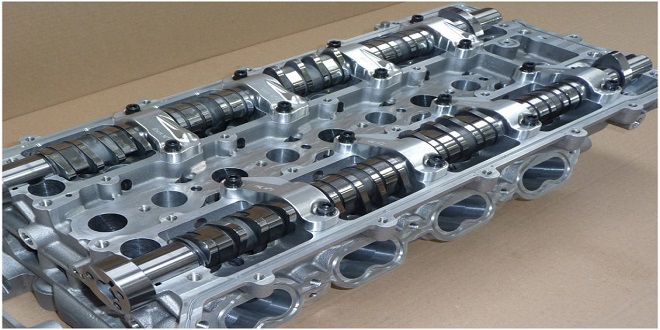In order to discuss the theory behind camshaft profiles, one should first have some understanding of the different types of scams that exist. The major types of cams are roller and flat tappet cams. Flat tappet cams incorporate a lifter that has a flat face that rides on the cam lobe.
Roller cams have a rolling element lifter that rides on the cam lobes. Note that both flat tappet and roller lifters can be broken down into two types, hydraulic (which uses oil to pump up a spring-loaded lifter, this type requires little to no adjustment) and solid (which requires periodic adjustment to ensure that the tolerance between the valve and rocker or cam follower is met).
Solid lifters are used widely in racing applications where very aggressive camshaft profiles are required. A hydraulic lifter will collapse under high stress due to the fact the oil pressure required to keep the lifter pumped up is inadequate. Camshafts may be placed in the engine block (for overhead valve engines) or in the heads (for overhead cam engines).
In overhead valve engines, the camshaft actuates the valves via a lifter, rocker, and pushrod assembly as shown below. In overhead cam engines, the valves are actuated via a lifter which rests 87 on the valve stem as shown below. The theory of operation and lobe profile are similar for the two types of engines regardless of the type of engine in question.
Camshaft profiles may be governed by a polynomial function. Such lobe profile is called the polygyny cam which was introduced by (Dudley 1948). Due to the fact that the cam is rotating on an axis and the valve lift is determined by the location on the cam lobe, the lift is given as a function of angular displacement.
[5] can be differentiated to find the velocity, acceleration, jerk, and quirk of the valveValve Events
In order to understand the cam theories provided by different camshaft manufacturers, it is essential to obtain a good grasp of the valve event fundamentals. These are outlined by Elgin [9] and Asmus [8] in their respective papers on camshaft theory: EVO: Exhaust Valve Opening Elgin considers this particular valve timing event to be of least importance.
This event should occur before BDC in order to ensure that the combustion chamber pressure is equal to that of the exhaust system in order to reduce the loss associated with pumping the exhaust out of the combustion chamber.
Note that the expansion ratio is greatly reduced if the engine EVO occurs too early which reduces power output. In his case study of the Chrysler 2.2 L engine that the volumetric efficiency is reduced by 0.07-0.12
This valve timing event significantly affects the valve overlap in an IC engine. Note that valve overlap is a very important quality in the production of an engine that has a smooth idle operation. At low engine speeds, a late EVC event will cause some exhaust gas to enter the combustion chamber and dilute the fresh intake charge.
However, at high engine speeds, the timing of this event is very critical in the discharge of exhaust gasses and ultimately determines how much of the exhaust is allowed to exit the combustion chamber. In general, if two similar engines are compared and the first has a later EVC event than the second, the first will produce more power at high engine speeds while the second will have better idle quality and more torque at lower engine speeds.
Last word
Asmus also points out in 91 of his case study of the Chrysler 2.2 L engine that the effect of EVC on the volumetric efficiency is about half that of the IVC (0.15-0.35percent/deg) at lower engine speeds. IVO: Intake Valve Opening It must be first noted that the volumetric efficiency of an engine is a function of piston speed.
 Jobsearchdone.com Top News Share Website
Jobsearchdone.com Top News Share Website




